
-
Find the right food for your pet
Take this quiz to see which food may be the best for your furry friend.
Find the right food for your pet
Take this quiz to see which food may be the best for your furry friend.
Featured products
 Small & Mini Savory Stew with Chicken & Vegetables Dog Food
Small & Mini Savory Stew with Chicken & Vegetables Dog FoodA delicious complement to the nutrition of Science Diet Small & Mini 7+ dog food
Shop Now Adult 7+ Perfect Digestion Chicken, Whole Oats & Brown Rice Recipe Dog Food
Adult 7+ Perfect Digestion Chicken, Whole Oats & Brown Rice Recipe Dog FoodScience Diet's breakthrough nutrition supports ultimate digestive well-being & healthy microbiome for dogs age 7+
Shop Now Adult Healthy Cuisine Roasted Chicken, Carrots & Spinach Stew Dog Food
Adult Healthy Cuisine Roasted Chicken, Carrots & Spinach Stew Dog FoodDelicious roasted chicken paired with tender vegetables in a succulent stew
Shop NowFeatured products
 Adult 7+ Tender Tuna Dinner Cat Food
Adult 7+ Tender Tuna Dinner Cat FoodWith delicious chunks in a decadent gravy
Shop Now Adult 7+ Senior Vitality Chicken & Vegetable Stew Cat Food
Adult 7+ Senior Vitality Chicken & Vegetable Stew Cat FoodImproves Everyday Ability to Get Up & Go
Shop Now Adult Savory Entrée Can Variety Pack Cat Food
Adult Savory Entrée Can Variety Pack Cat FoodPrecisely balanced nutrition with the delicious taste of savory minced chicken to help fuel the energy needs of cats during the prime of their life
Shop Now -
Dog
- Dog Tips & Articles
-
Health Category
- Weight
- Food & Environmental Sensitivities
- Urinary
- Digestive
- Joint
- Kidney
-
Life Stage
- Puppy Nutrition
- Adult Nutrition
- Senior Nutrition
Cat
- Cat Tips & Articles
-
Health Category
- Weight
- Skin & Food Sensitivities
- Urinary
- Digestive
- Kidney
-
Life Stage
- Kitten Nutrition
- Adult Nutrition
Featured articles
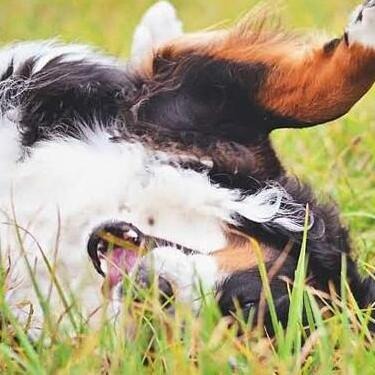 Do Dogs and Cats have Belly Buttons?
Do Dogs and Cats have Belly Buttons?Learn whether cats & dogs have belly buttons like humans, what the function is, and if there are any health concerns associated with it.
Read More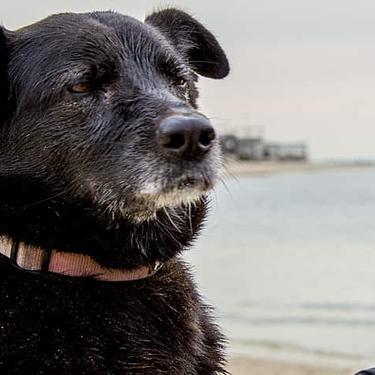 Does My Pet Hate Me?
Does My Pet Hate Me?Learn tips for bonding with your pet if you've ever thought, 'My dog doesn't like me, or 'Why do I have a standoffish cat?'
Read More Why Are Dogs and Cats So Cute?
Why Are Dogs and Cats So Cute?If waggy puppy dog tails and furry kitten yawns make you swoon, you're not alone. Why are cats so cute? And, dogs too! Let's find out!
Read More -


Whether you're going on a quick ride around the neighborhood or tackling the trails at a local park, dogs that like to run make great bike ride companions for active folks. Let's discover which types of dogs excel at this activity, how to prep for your first adventure and safety tips for riding a bike with your dog.
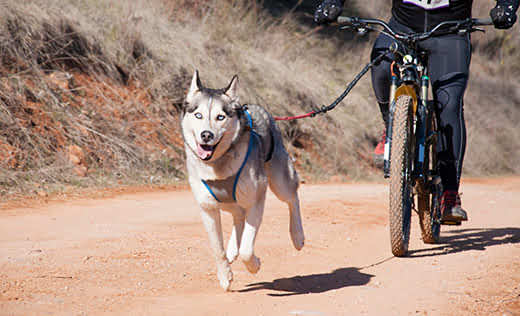
Deciding if Your Dog Is a Good Biking Candidate
Just like humans, some dogs are drawn to the great outdoors and happiest when exploring trails and paths. Some breeds naturally crave high-intensity exercise and the open spaces of parks. IRideUp's mountain biking guide explains that Australian cattle dogs, border collies, Labrador retrievers, Vizslas and Weimaraners are a few of the dog breeds that do well on mountain biking trails with their pet parents.
They also mention that the best biking companions are responsive to verbal commands. You'll be using the word "come" often to keep the pet on the path and moving in the direction of your bike (and away from other bike riders and walkers). If your pet is a sponge for recall commands, you might also try teaching "left" and "right" to help guide them through your route and away from potential hazards, like steep ravines or sharp rocks.
When it comes to physical fitness, be mindful of your dog's abilities. Sure, you may be able to coast downhill for part of a 10-mile ride, but for your four-legged friend, it's consistent hiking. Does your dog breeze easily through neighborhood walks? Are their paws, joints and legs in good health? How's their heart? Much like a human prepping for a road race, it's a good idea to get the thumbs up from your veterinarian to take your pet on more extensive exercise-focused outings, like bike rides.
Also, if your dog is prone to stopping to sniff or gets easily distracted by wildlife or people behind they may not be the best dogs for taking with you on a bike ride. The last thing you want to happen is for them to stop quickly and hurt themselves or hurt you by pulling you off of the bike.
Plan Out Your First Bike Ride
If you've determined that your pet is mentally and physically prepared to run alongside you during a bike ride, then it's time to start preparing. Here are a few logistical things to keep in mind when learning how to bring your dog on a bike ride, thanks to the cycling enthusiasts at IRideUp and Bicycling Magazine.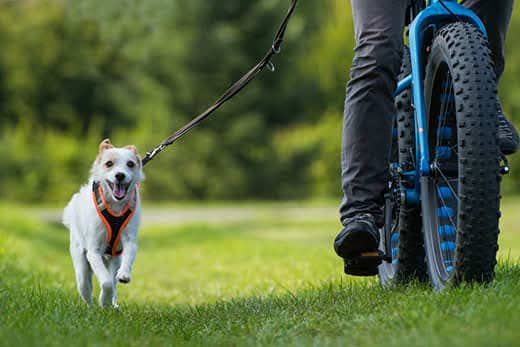
- Is the weather right for a ride? Remember, your pet's paws will be in contact with the ground the entire time. Is it too hot, cold or icy for dogs that like to run to enjoy the adventure?
- Does your pet tolerate extreme temperatures well? You may be bundled in layers and keep your dog wrapped in a snuggly coat or cooling vest, but are they truly comfortable? Maybe you need to plan a shorter outing to keep them cozy.
- How does your dog like to follow? Determining whether your dog runs at the front or back of your bike may take a little guidance from an experienced dog trainer. They can teach you commands to keep the pet from trailing too close, or straying too far.
- How far can your pet go? Keeping up with your bike means the pet will need to jog or run — not leisurely walk — the majority of the time. Do a few test runs in your neighborhood or a local park (away from traffic) for 10 or 15 minute rides. Then, keep your first official outing short at a mile or two to see how your dog does overall. When it comes to how to bring your dog on a bike ride, keep in mind that you might have to do consistent training with your pup to keep them road-ready.
- What time should I go out? To keep both you and pet from getting overwhelmed, choose a low-population path on a random weekday to figure out how your biking partnership will flow. Weekends and holidays will be busier, and more distracting.
After a handful of practice runs and your first ride or two, you can gradually start increasing your biking distance. Healthy, agile, younger pets will be able to manage longer runs better than those with health concerns or in their senior years. Look to your dog for cues. When they pant continually, lie down for a long rest or nudge you for attention, they likely need a break or to pack it in for the day.


Tasty Tips
Necessary Items For Your Bike Trip
As you choose a spot for your bike rides, find out the rules and regulations for pet parents. Some parks and trail systems designate off-leash areas, while others may dictate that pets must be leashed at all times.
If you're headed to an area that requires a leash, choose one made specifically to attach to your bike. If you're going the off-leash route, be sure your pet is wearing identification and a bright-colored vest, harness or collar to help both you and others spot them quickly.
In addition to leashes, vests and collars, bring along these items recommended by The American Hiking Society and REI.
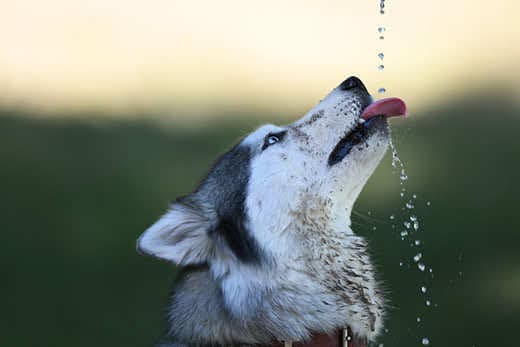
- Bottled water
- Training treats
- Dog food (if away from home the majority of the day)
- Snacks or a meal for you
- Collapsible travel bowls
- Canine and human first-aid kits
- Flashlight (for evening adventures)
- Clothing (rain jacket, fleece, dog sweater, dog chest protector or dog booties)
- Cell phone with your vet's phone number
- Dog waste bags
- A small towel
Supplies can be kept in a backpack you wear, or a pack for your dog that is secured to their back and chest. REI says to limit the weight of your pet's pack to 25% of their body weight. So, if you have a 70 lb (ca. 32 kg) Labrador Retriever puppy, be sure their gear is no heavier than roughly 18 lbs. During your first few runs, keep the pack extra light. They're still getting familiar with wearing a new apparatus and will need time to adjust.
A Few Final Tips for Biking Pet Parents
Not all dogs are cut out for high-activity biking adventures, and that's okay! If your pet is happier with slow strolls around the neighborhood, tossing the ball at the dog park or running an obstacle course in your backyard, honor that. Just like people, your dog's hobbies may differ from yours.
It's also worth mentioning that learning how to bring your dog on a bike ride means mixing with other pet parents, bikers and pedestrians. You should have control over your pet at all times to keep the outing safe for you and everyone you encounter. Not all people sharing your path will like dogs, so a quick recall command needs to be ready at a moment's notice.
By spending a few afternoons practicing biking with your dog by your side, you'll quickly discover if this activity is right for you both. Be patient, seek the guidance of a dog trainer and contact your vet for advice about keeping your pet healthy and safe when engaging in new activities like biking and hiking together. You might just discover a new favorite pastime that's healthy for both you and your canine companion. Happy trails!


Angela Tague is a pet mom and writer living in the Midwest. When she's not making a mess in the kitchen, exploring nature trails with her dog, or attending a yoga workshop, she's writing full-time for multiple lifestyle and technology brands. You can find her on Twitter and LinkedIn @AngelaTague.
Related products

Delicious braised beef paired with tender vegetables in a succulent stew

Delicious roasted chicken paired with tender vegetables in a succulent stew

Science Diet's breakthrough nutrition supports ultimate digestive well-being & healthy microbiome for dogs age 7+

A delicious complement to the nutrition of Science Diet Small & Mini 7+ dog food
Related articles

Hill's Science Diet Small & Toy Breed dog foods are designed to meet the nutritional needs for your small dog at every life stage. Learn more here.

Large and giant breed puppies have different nutritional needs than other dogs. Learn how to provide the special care they need to grow up big and strong.

Learn about choosing the right food for your mature or older dog, ensuring he receives the correct balance of nutrition.

Your dog's coat and skin are a big part of your dog's overall health. Ensure you keep your dog's coat healthy, by following these simple tips.
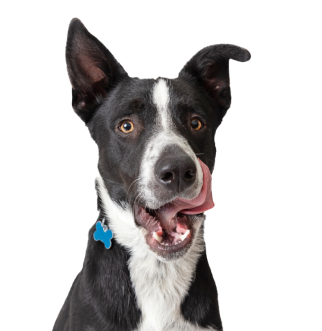
Put your dog on a diet without them knowing
Our low calorie formula helps you control your dog's weight. It's packed with high-quality protein for building lean muscles, and made with purposeful ingredients for a flavorful, nutritious meal. Clinically proven antioxidants, Vitamin C+E, help promote a healthy immune system.
Put your dog on a diet without them knowing
Our low calorie formula helps you control your dog's weight. It's packed with high-quality protein for building lean muscles, and made with purposeful ingredients for a flavorful, nutritious meal. Clinically proven antioxidants, Vitamin C+E, help promote a healthy immune system.

